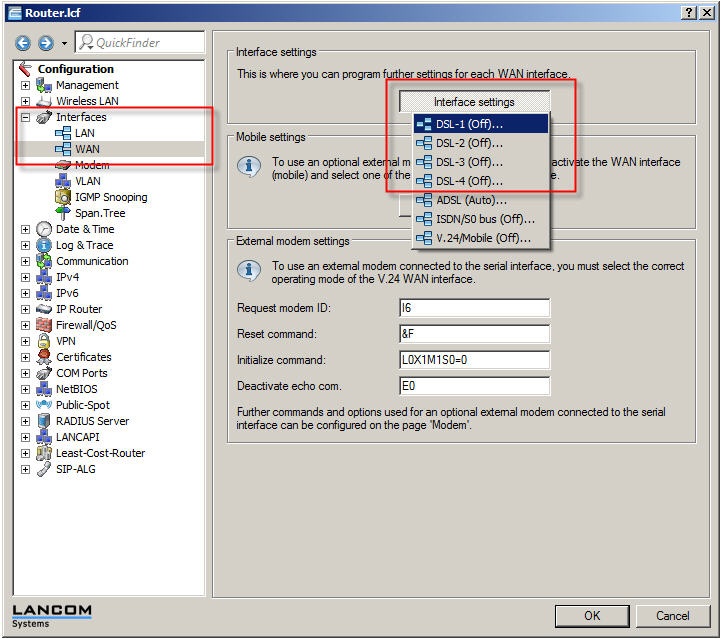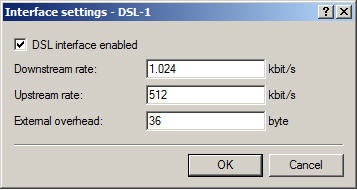Description:
The document explains which line-speed settings are necessary for QoS to function.
Requirements:
Scenario:
You wish to set up QoS using an external modem or a IPoE connection.
Procedure:
In order to provide functional QoS, the router must know the speed at which outbound connections operate in order to allocate the maximum bandwidth efficiently. If no restriction is set on this, the router would assume that the full link speed is available, which for LANCOM routers is currently 10 Mbit or 100 Mbit.
However, the true connection speed is usually lower, so that a limit should be set here.
1. Open LANconfig and go to Configuration -> Interfaces -> WAN -> Interface settings -> DSL.
If more than one DSL connection is available, ensure that you select the one you are using.

2. In the following dialog, specify your connection speeds:

3. Write the configuration back to the device.
Notice:
Notes on the calculated values:
The downstream rate is measured in kilobits and includes everything arriving at the router over the WAN Ethernet. For example, on a T-DSL connection with guaranteed 768 kbit downstream, the upstream rate negotiated by the modem is 864 kbit. This still includes an overhead typical for this type of connection, which results from the modem using ATM as the transport protocol.
If we adjust the 864 kbit to allow for the overhead that results from the structure of an ATM cell (48 bytes of payload for a cell length of 53 bytes), we arrive at 864 * 48/53 = 782 kbit gross downstream rate, which is transferred from the modem to the router over Ethernet. If data rates negotiated by the modem are unknown, it is possible to multiply the guaranteed data rates by 56/55 to approximate the gross data rates.
The upstream rate is also given in kilobits and accounts for everything that is sent over the WAN Ethernet. For example, on a T-DSL connection with guaranteed 128 kbit upstream, the upstream rate negotiated by the modem is 160 kbit.
The upstream rate also includes the overhead mentioned above. Allowing for the overhead in the 160 kbps, we get 160 * 48/53 = 145 kbit gross upstream rate, which is the data rate available for transmitting from the router to the modem over Ethernet. If data rates negotiated by the modem are unknown, it is possible to multiply the guaranteed data rates by 576/512 to approximate the gross data rates.
The external overhead results from the data that the modem attaches to each packet. For PPPoE connections, this is 4 bytes for the LLC header and 8 bytes for the AAL 5 trailer. The modem cannot send "partial" ATM cells, so on average half an ATM cell (= 24 bytes) must be allowed for additionally. The resulting total overhead is thus 36 bytes per transmitted packet.
For non-PPPoE-based Internet access, the following calculation basis applies:
For a IPoA connection, the external overhead would be 22 bytes with LLC-MUX and 18 bytes with VC-MUX (calculation: The Ethernet header is removed => -14 bytes, with LLC-MUX 4 bytes is added again for the LLC header, and then 8 bytes for AAL-5 and a half ATM cell).
The external overhead with a cable modem would be 0 bytes, as the Ethernet packets are forwarded directly without introducing additional headers or splitting the packets into ATM cells.
|
|